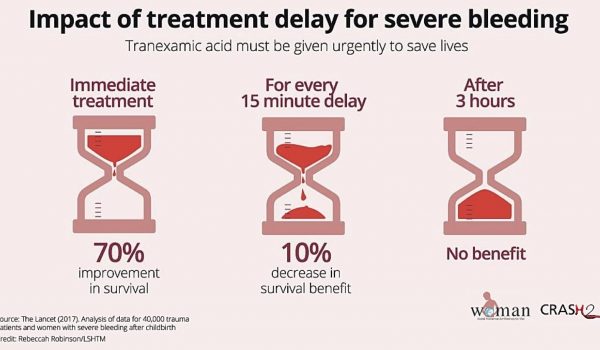TXA Central
TXA Central is a resource for health professionals caring for patients with acute severe bleeding
TXA Central is a resource for health professionals caring for patients with acute severe bleeding
Giving Tranexamic Acid (TXA) as soon as possible and no later than 3 hours will help save the lives of trauma victims, women after childbirth, and also reduces bleeding in patients undergoing surgery
But, what is TXA and how does this drug actually work?
TXA is the acronym for the drug Tranexamic acid.
TXA is an antifibrinolytic drug that inhibits the enzymatic breakdown of fibrin blood clots (fibrinolysis).
Plasminogen is a glycoprotein pro-enzyme produced by the liver that is converted into plasmin by tissue plasminogen activator (tPA). The plasminogen molecule is folded into loops called kringles that stick out like fingers and contain lysine-binding sites. Plasminogen and tPA bind to lysine residues on fibrin leading to localised plasmin formation.
Plasmin splits fibrin into fibrin degradation products. This exposes more lysine residues which bind more plasminogen, thus accelerating fibrinolysis. Plasmin bound to fibrin is less susceptible to inhibitors. TPA also binds to fibrin thus localizing and enhancing plasmin formation.
TXA is a synthetic analogue of lysine and inhibits fibrinolysis by competing with fibrin for the lysine binding sites in plasminogen. TXA inhibits the capacity of plasminogen and plasmin to bind to fibrin, hence preserving blood clots from plasmin-mediated lysis.
TXA is most effective when given as early as possible and no later than 3 hours of injury or childbirth.
But, how does TXA stop
bleeding?
This video explains the mechanism of action of TXA.
This graph shows the analysis of data for 40,000 trauma patients and women with severe bleeding and the impact of treatment delay in giving TXA.
For every 15-minute delay, there is a 10% decrease in survival benefit.
